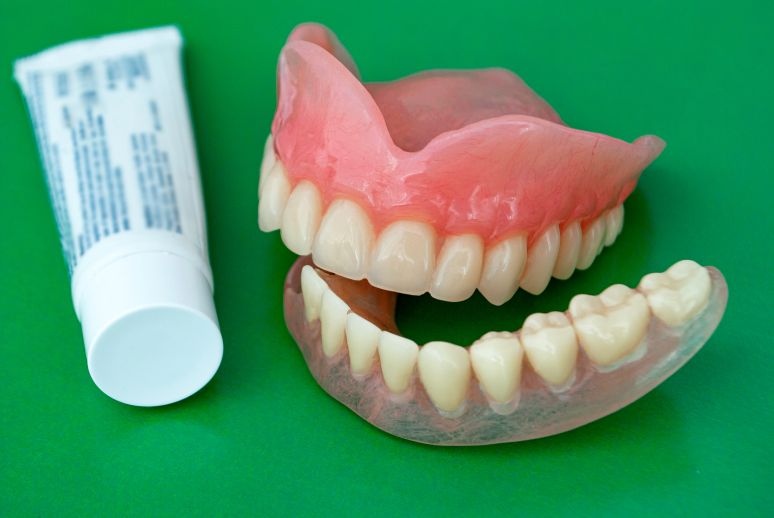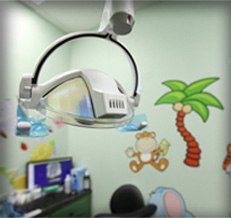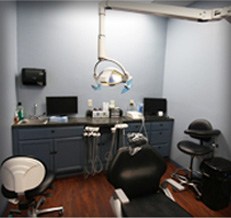
If you have new dentures, or if your old dentures have stopped fitting securely, using denture adhesives can help keep them in place. While you should never rely on denture adhesives as a permanent solution, they can assist you in temporarily stabilizing your prosthetics, so they don’t slip when you are eating or speaking.
Here’s a handy guide to proper denture adhesive use, and what you should do if yours stop fitting properly.
How to Use Denture Adhesive
Selecting denture adhesive is a matter of personal choice. Each type ranges in price and formula, but all work to hold your dentures in place temporarily. Here’s a closer look at how to use each kind:
Denture Adhesive Cream
- First, clean and dry your dentures completely.
- Apply the adhesive cream directly onto the denture in short strips and be sure not to get any on the edges. Apply sparingly so it doesn’t ooze out from the sides of your prosthetic.
- Rinse your mouth.
- Press the denture into place and then hold it firmly for several seconds. Bite down on it to secure it in place.
Denture Adhesive Powder
- Clean your dentures thoroughly but leave them wet when you are done.
- Spray the denture adhesive powder very lightly and evenly on all surfaces of the prosthetic that will touch your gums and the roof of your mouth.
- Rinse your mouth with water.
- Shake any loose powder from the denture.
- Put your prosthetic in your mouth, pressing down to secure it in place.
Denture Adhesive Strips
- Thoroughly clean and dry your denture.
- With clean, dry hands, remove the adhesive strips from their packaging.
- Moisten one strip at a time with regular tap water.
- Attach the strips to your dentures as shown in the product instructions, keeping them away from the edges. Do not overlap them. Note that adhesive strips can be torn or cut into shape as needed.
- Rinse your mouth with water.
- Pressing the denture into place, hold onto it firmly, and bite down on it to obtain a secure hold.
Cleaning Adhesive Off Your Dentures
When you are ready to take out your dentures for the night, first swish some warm water in your mouth, and then gently pull them out, putting them down somewhere safe.
Using a soft-bristled toothbrush, gently scrub your gums with toothpaste to remove any adhesive.
Once your mouth is clean, it’s time to clean your dentures. To remove the adhesive, get a second toothbrush and scrub the entire prosthetic with either mild hand soap or denture cleanser. Be sure to floss between each tooth and then rinse them well before placing them in a glass of water or denture soak while you sleep.
Remember, unless your dentures are new, you should not need adhesives for them to stay in place. If you notice yours are no longer fitting correctly, it’s time to schedule an appointment with your dentist for a reline or replacement.
About Dr. Kadamani
Dr. Racha W. Kadamani is a skilled and compassionate dentist who strives to provide the highest standards in oral health care for every patient that walks through her door. Whether you have a full set of teeth, are missing a few, or have none of your natural teeth, Dr. Kadamani understands that all smiles are precious and deserving of care.
If you need assistance with improperly fitting dentures, don’t rely on temporary solutions like adhesives to keep them in place. Schedule an appointment with Laith Family Dentistry today and let Dr. Kadamani and the team help make your prosthetics comfortable and easy to keep in place without the need for band-aid solutions like denture adhesives.
To book an appointment, please visit our website or call us today at 210-782-6842.







